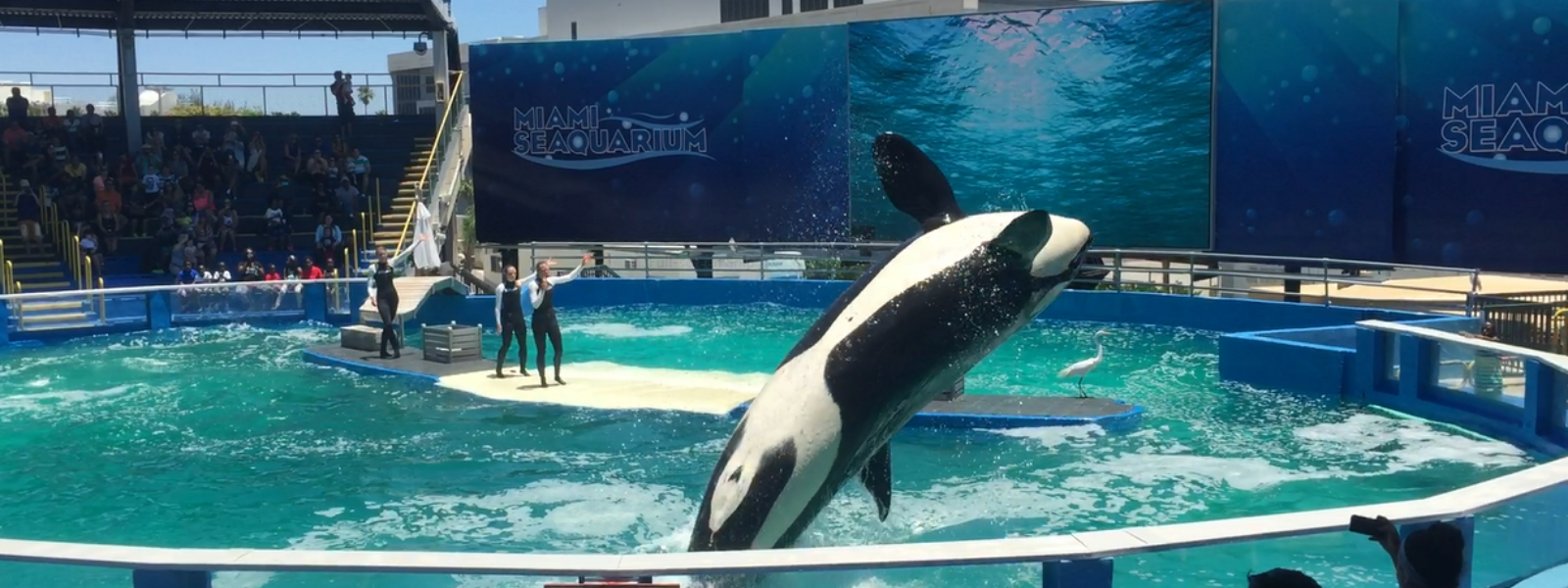

On July 20th, our colleagues with In Defense of Animals (IDA) released a ranking of the Ten Worst Tanks for captive dolphins and whales in North America.
Selected from more than 60 facilities where nearly 1,000 cetaceans are currently held captive, the list ranked the facilities based on what issues they best exemplify and represent. Beyond physical concerns such as tank sizes or prevalence of illness, which were also taken into consideration, a combination of social factors weighted rankings as well – such as public mis-education.
The results aren’t surprising. SeaWorld’s three facilities in the United States were combined to rank as number 1 on the list for being “the biggest disappointment with the biggest promise”. IDA outlines the true motivations behind the company’s recent announcement to phase out orca breeding in captivity as being purely self-serving and intentionally misleading to the public.
SeaWorld’s position as a global industry leader and their ability to affect the lives of the greatest number of captive (and wild) cetaceans around the world gave their position additional weight. The International Marine Mammal Project (IMMP) supports this ranking wholeheartedly. As David Phillips of IMMP and Paul Watson of Sea Shepherd noted in a joint announcement last spring, “By leaving dolphins out of their new ‘conservation’ plan, SeaWorld sends a signal around the world that keeping dolphins in captivity is fine. This will be welcome news to the Taiji dolphin hunters as they keep up their capture and sale of dolphins to captive facilities in Japan, China, and Dubai and elsewhere.”
Already, members of certain facilities have responded to their presence on IDA’s list. Moby Solangi of the Institute of Marine Mammal Studies, which earned the number 7 spot on the list, made statements that are excellent examples of how the cetacean captivity industry spreads erroneous information. For example, Solangi notes that “…dolphins and whales in the wild face problems with pollution, disease, predation, food shortages, natural disasters, and oil spills,” and says that cetaceans in captivity do not face these challenges. He is attempting to argue that captivity is essentially preferable for cetaceans to being wild animals. However, despite these allegedly “safer” conditions, cetaceans still suffer from shortened lifespans and stress-related diseases not found in wild animals.
He goes on to say that cetaceans “enjoy” interactive programs. It is surprising that he would make this claim given that he has no scientific evidence to back this up. It is all the more surprising because he is a scientist and attempts to legitimize his “Institute” as one with scientific validity.
Overall, IDA’s Ten Worst Tanks will provide further awareness of the suffering that cetacean captivity causes. As Toni Frohoff, Ph.D., Cetacean Scientist for In Defense of Animals, said, “Beneath the glitz, glamour, and dolphins’ permanently fixed ‘smiles’ is a world of pain and suffering in these brilliant and complex mammals of the sea. Captivity deprives dolphins and whales of the lives they’ve adapted to live for millions of years in the wild, and steal from them what we – and likely they – value most; freedom and family.”
We agree.
Photo credit In Defense of Animals / Paul Derdzinski.